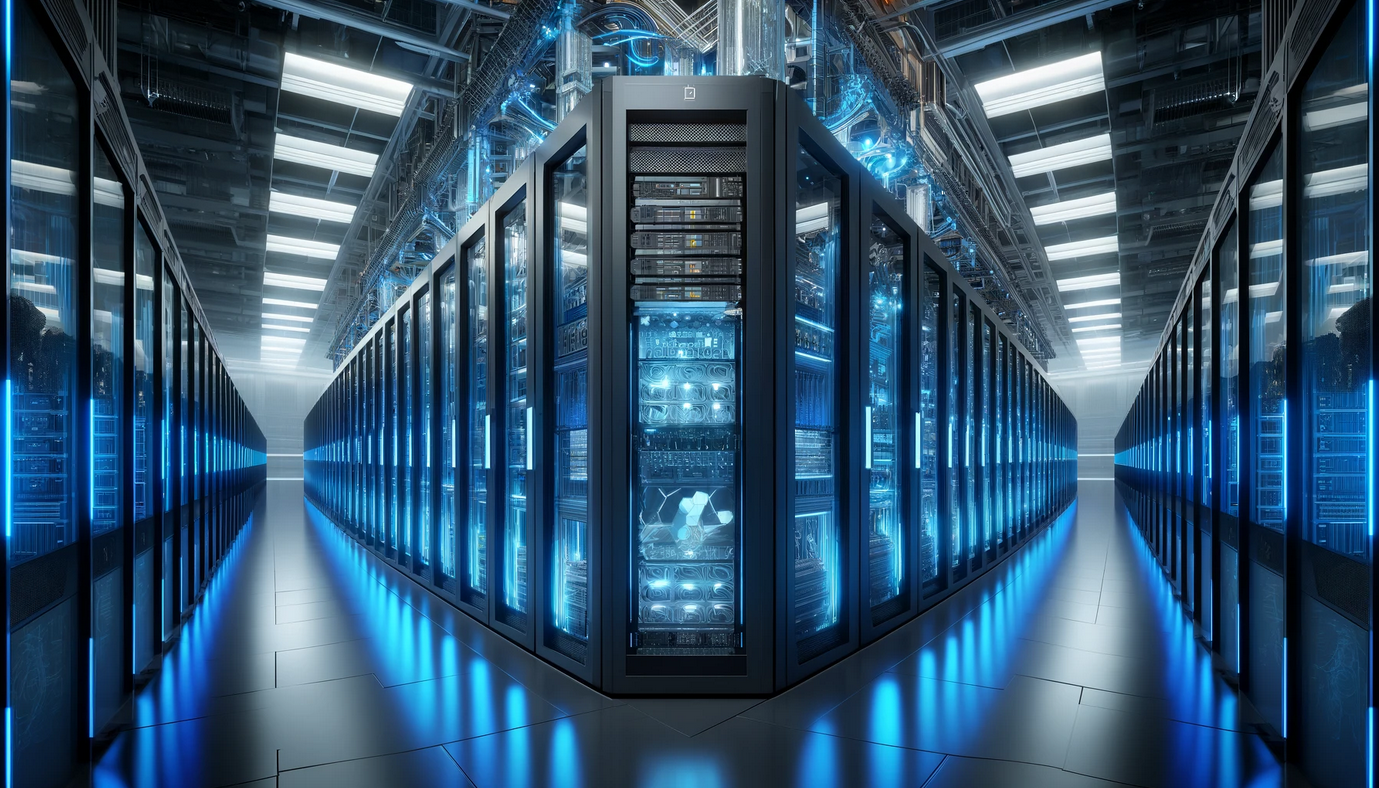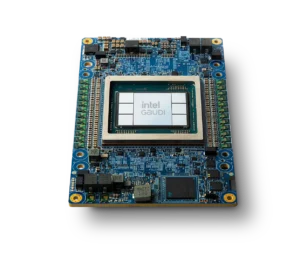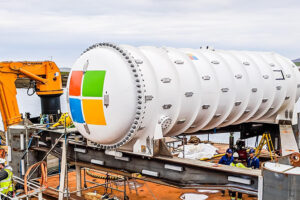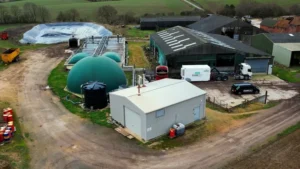The Impact of Artificial Intelligence on Modern Data Centre Architecture

The advent of Artificial Intelligence (AI) is causing a profound and fundamental shift in numerous industries around the globe, and the data centre business is a prominent illustration of this transformation. The computing requirements of AI workloads have caused a fundamental change in the design of data centres, requiring substantial adjustments in infrastructure, power needs, cooling methods, and operational approaches. This paper investigates the profound influence of artificial intelligence (AI) on modern data centres. It provides illustrative instances and analyses various aspects including power requirements, rack capacities, structural stability, cooling difficulties, automation, operational effects, and innovative approaches such as modular data centres that make use of surplus renewable energy.
Power Requirements
AI workloads, especially those that involve deep learning and neural networks, demand significant processing resources and necessitate substantially more power compared to conventional workloads. The rise in power demand is mostly fueled by the requirement for high-performance computing (HPC) settings, frequently employing Graphics Processing Units (GPUs) and specialised AI accelerators.

The DGX-2 from NVIDIA and the Gaudi AI processors from Intel demonstrate the significant power requirements of AI systems. The power consumption of the DGX-2 unit is around 10 kW, whereas Intel’s Gaudi processors are specifically engineered to enhance power efficiency for AI training and inference. These AI solutions exhibit a substantial increase in power consumption compared to the standard range of 500 watts to 2 kW for servers. With the expansion of AI applications, data centres need to prepare for increased power densities.
Rack Static Weight Capacities
Data centres’ physical infrastructure needs to accommodate the growing weight of AI hardware. Traditional servers are less heavy in comparison to AI servers and HPC equipment that are equipped with powerful GPUs. Therefore, it is necessary to reevaluate the maximum weight that racks can support in order to guarantee safety and structural stability.
Conventional server racks have a weight capacity of up to 2,000 pounds. Nevertheless, the racks that contain AI gear, such as the NVIDIA DGX-2 or Google’s TPU pods, can have a somewhat higher weight due to the compactness of the equipment. Data centres should strengthen their racks and consider upgrading to racks specifically designed to handle larger weight capabilities, such as those capable of handling loads ranging from 3,000 to 4,000 pounds.
kW per Rack
In order to accommodate the power requirements of AI workloads, it is necessary to augment the power capacity per rack. Conventional data centres usually assign approximately 5-10 kW per rack, whereas AI-optimized data centres must allot 30-50 kW per rack or maybe much higher.
According to reports, Google’s data centres have the capacity to provide up to 45 kW of power per rack for their artificial intelligence architecture. To maintain reliability, improved power distribution units (PDUs) and redundant power supply are necessary to accommodate this high level of power density.
Structural Integrity of Data Centre Floors
The augmented mass of AI hardware also impacts the structural soundness of data centre floors. Conventional raised floor systems may lack the capacity to bear the weight of AI servers, thereby requiring enhancements to the flooring systems.
Data centres may require a shift from raised flooring to reinforced concrete slabs in order to accommodate the higher weight capacity. Facebook and Microsoft have already implemented these concepts in their AI-centric data centres to guarantee stability and safety.
Cooling Challenges
AI gear produces a considerably higher amount of heat compared to conventional servers, resulting in a greater need for cooling. Effective cooling systems are crucial for maintaining ideal operating temperatures and preventing overheating.

Microsoft’s Project Natick showcases pioneering cooling techniques. Microsoft optimises heat dissipation by utilising the inherent cooling capabilities of water through the strategic placement of data centres underwater. In addition, there is an increasing prevalence of liquid cooling systems, with businesses such as NVIDIA and Google employing direct-to-chip liquid cooling to effectively handle thermal loads.
Automation
Automation plays a vital role in effectively managing the intricate surroundings of data centres powered by artificial intelligence. Automation improves operational efficiency and minimises human involvement by enabling tasks like as resource provisioning, scalability, predictive maintenance, and energy optimisation.
Google’s utilisation of artificial intelligence (AI) for the purpose of managing energy in its data centres serves as an excellent example. Google has achieved a 40% reduction in its data centre cooling expenses by utilising DeepMind’s AI algorithms. The AI system consistently checks and fine-tunes cooling configurations, optimising energy consumption and ensuring ideal temperatures are maintained.
Operational Impact (Technical and Financial)
The transition towards data centres that prioritise artificial intelligence (AI) has substantial technological and budgetary consequences. Data centres need to incorporate sophisticated networking technologies to manage the substantial bandwidth demands of AI workloads. From a financial perspective, the greater power and cooling requirements result in increased operational expenses. However, these costs are frequently balanced out by the improved capabilities and efficiency that artificial intelligence (AI) offers.
AWS provides specialised EC2 instances, such as the P3 and P4 instances, specifically developed for AI and machine learning tasks. These instances have the required processing capacity but are expensive. Nevertheless, the advantages of reduced processing times and enhanced AI model performance frequently warrant the expenditure.
Grid Challenges
The increased power requirements of data centres focused on artificial intelligence might put pressure on local power grids, especially in regions with insufficient energy infrastructure. Data centres must have a strong collaboration with utility providers in order to provide a reliable and adequate power supply.
In areas such as Northern Virginia, where there is a high concentration of data centres, the local power grids experience considerable stress. Amazon and Microsoft are allocating resources to invest in renewable energy sources, specifically solar and wind, in order to augment their energy requirements and diminish dependence on conventional grid infrastructure.
Modular Data Centres and Renewable Energy
An emerging phenomenon in the data centre sector is the adoption of modular data centres, which offer the advantages of rapid deployment and scalability to accommodate increasing demand. Chainergy.io and similar companies are using modular data centres to take use of surplus renewable energy. This offers a sustainable and adaptable approach to meet the increasing power demands of AI workloads.

Chainergy.io strategically places modular data centres in areas abundant with renewable energy, such as in close proximity to wind farms, biomass plants or solar parks. These modular modules may effectively harness surplus energy that would otherwise be wasted, guaranteeing a more environmentally friendly and economically efficient power source for AI operations. This method not only mitigates the environmental impact of data centres but also improves their operational adaptability.
Conclusion
The emergence of artificial intelligence is fundamentally transforming the structure of contemporary data centres. Data centres must undergo evolution to meet the needs of AI workloads, which include greater power and cooling requirements, stronger structural integrity, and advanced automation. The industry’s agility and commitment to sustainability are exemplified by innovations like modular data centres that make use of surplus renewable energy. Although the implementation of these modifications may pose technical and budgetary difficulties, the advantages of improved processing capacities and efficiencies justify the switch. With the continuous advancement of AI, the data centre sector will definitely innovate further, developing infrastructure that can effectively serve the next wave of AI applications.
